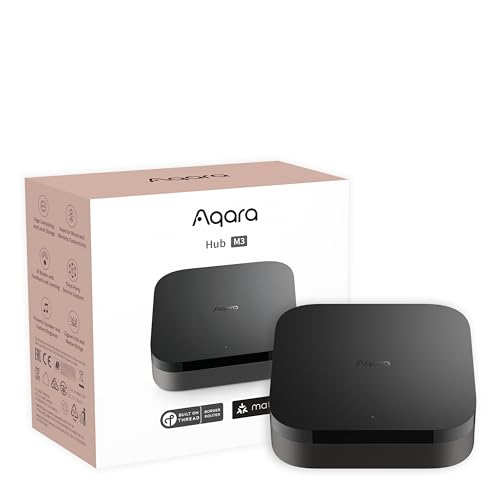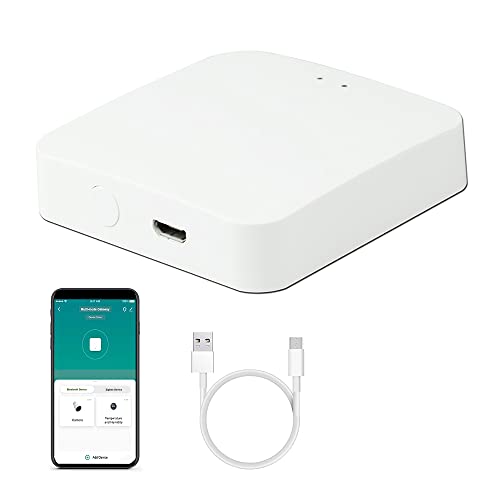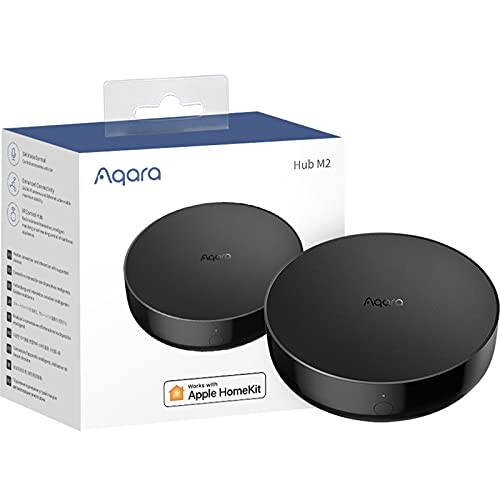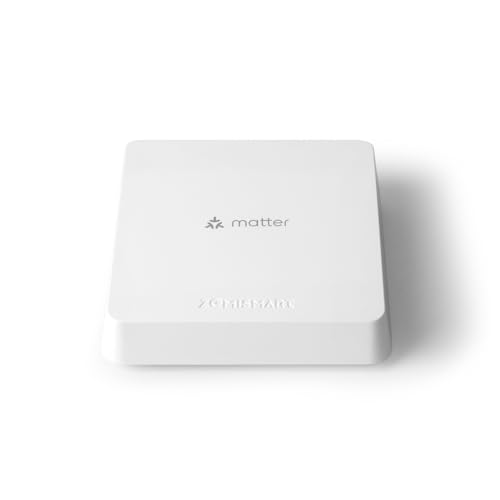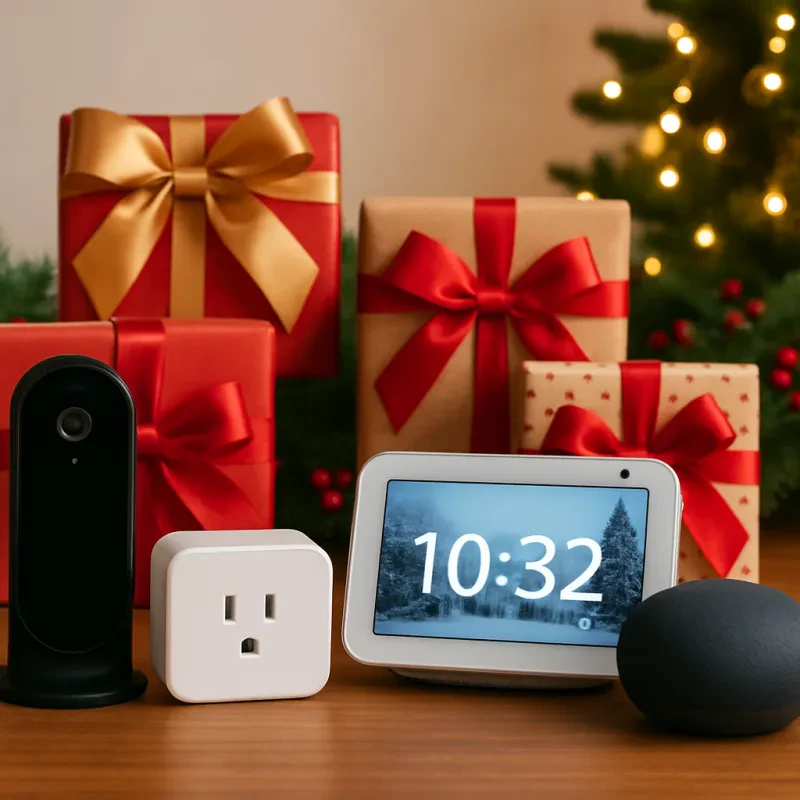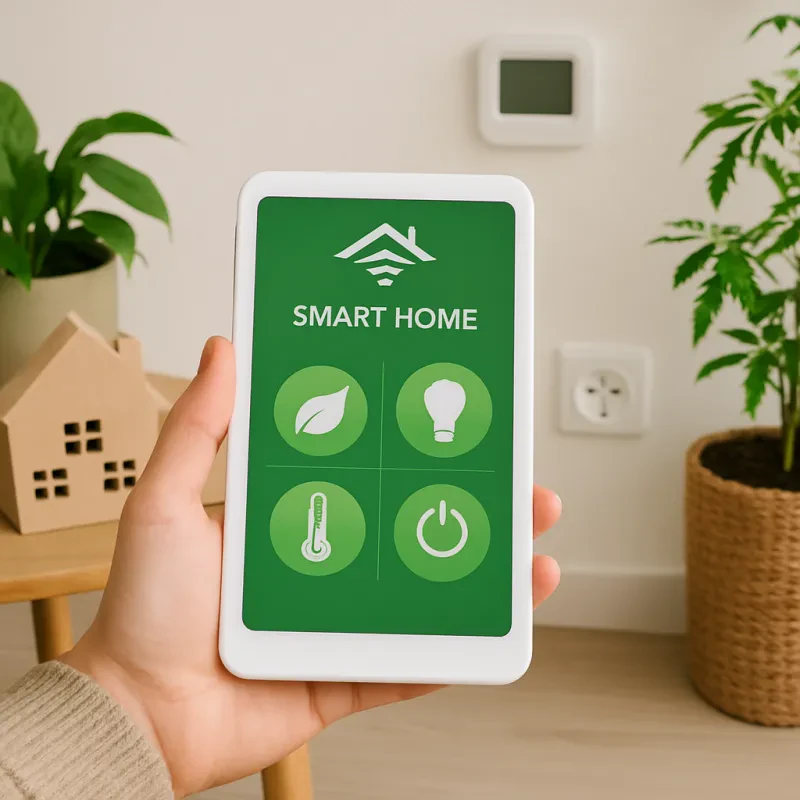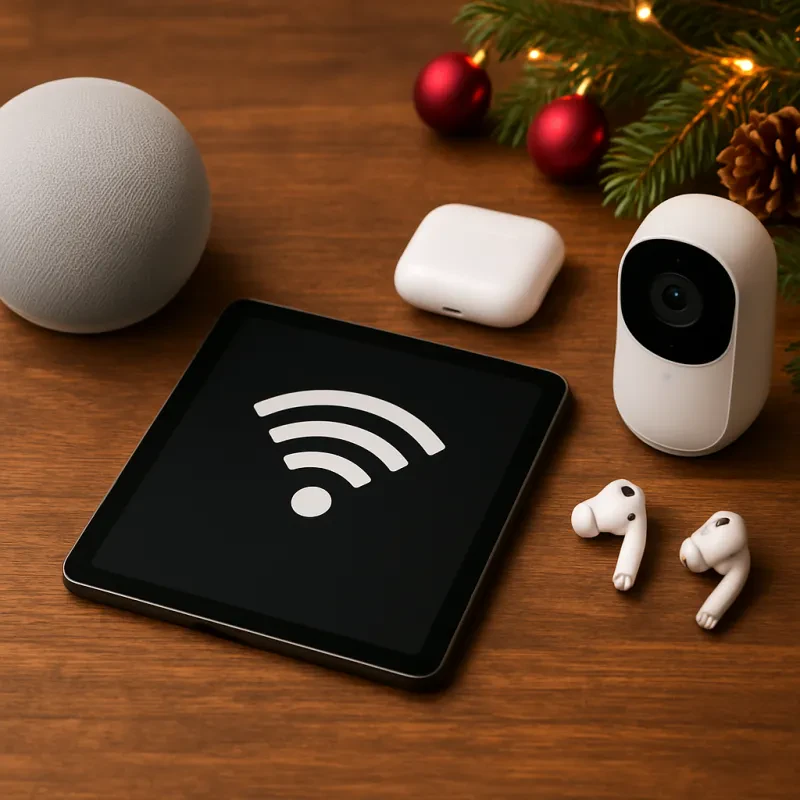Introduction to Smart Home Technology
Smart home technology encompasses a range of devices and systems designed to enhance the functionality and convenience of residential living. This technology allows homeowners to control various aspects of their environment, such as lighting, heating, and security, through internet-connected devices. The evolution of smart home technology can be traced back several decades, starting with rudimentary remote controls and simple automation systems. Over the years, advancements in internet connectivity and mobile technology have significantly transformed the landscape of smart homes.
The transition from luxury items to mainstream household staples is one of the key milestones in the journey of smart home technology. Initially, products like automated lighting and smart security systems were often seen as extravagant features, primarily accessible to affluent consumers. However, as technology became increasingly affordable and user-friendly, these innovations began to permeate the average household. This democratization of smart technology has enabled a wider demographic to benefit from the enhanced efficiency and comfort that these systems offer.
As we approach 2025, the growing prevalence of smart home devices indicates an ongoing trend toward increased integration and intelligence within residential environments. Devices such as smart speakers, thermostats, and security cameras are becoming standard fixtures, reflecting a shift in consumer expectations regarding home automation. This evolution is not merely a matter of convenience; it also addresses significant concerns regarding energy efficiency, security, and accessibility. With advancements in artificial intelligence and machine learning, the capabilities of smart home systems are anticipated to expand, providing users with even greater control and customization options.
Through this analysis, it is clear that the trajectory of smart home technology is set to continue its upward trend, with exciting developments on the horizon as we navigate toward 2025.
Increased Integration of AI and Machine Learning
The integration of artificial intelligence (AI) and machine learning technologies within smart home devices is set to significantly reshape the landscape of home automation by 2025. These innovations not only enhance user experience but also foster greater personalization and efficiency in managing household tasks. AI algorithms are capable of learning from user behaviors and preferences, effectively adapting to individual needs over time. This presents a remarkable opportunity for homeowners to enjoy a highly tailored living environment that anticipates their requirements.
For instance, smart thermostats that utilize AI can analyze historical heating and cooling patterns to optimize energy usage while ensuring comfort. Similarly, AI-powered security systems can identify unusual activity, alert homeowners in real-time, and even provide predictive analytics to assess potential security risks before they emerge. This proactive approach significantly enhances the effectiveness of home management systems, making them not just reactive but also anticipatory.
Moreover, the integration of machine learning capabilities allows devices to understand complex patterns, which can lead to improved task automation. For example, robotic vacuum cleaners equipped with advanced AI can learn the layout of a home, schedule cleaning sessions when occupants are away, and identify high-traffic areas requiring more frequent cleaning. These enhancements not only save time but also promote efficient energy consumption, reflecting a growing emphasis on sustainability within smart home technology.
The implications of these technologies extend beyond mere convenience; they signify a shift towards a more interconnected home ecosystem. As the capabilities of AI and machine learning continue to evolve, we can expect a future where home automation systems not only simplify daily tasks but also provide actionable insights into household management. This increased integration will undoubtedly enhance the overall efficiency and user experience within the smart homes of 2025.
Enhanced Home Security Solutions
As we move towards 2025, the landscape of smart home security solutions is evolving at a remarkable pace. One of the primary advancements in this field is the improvement in surveillance technology. Home security cameras have become more sophisticated, with features such as high-definition video resolution, night vision capabilities, and real-time alerts being the norm rather than the exception. These enhancements allow homeowners to monitor their properties more effectively, providing greater peace of mind.
Moreover, the integration of artificial intelligence (AI) into security systems is revolutionizing how threats are detected and managed. AI-powered cameras can now differentiate between typical movements, such as a pet roaming about, and potential intruders. This capability significantly reduces false alarms, allowing security systems to issue alerts only when there is a real threat. Consequently, this leads to a more proactive approach in home security, enabling homeowners to respond promptly to any suspicious activity.
Another trend we observe is the rise of smart locks, which are becoming an integral part of enhancing home security. These locks allow homeowners to control access to their homes remotely, eliminating the need for traditional keys. Instead, they utilize various methods for entry, including smartphone applications, biometrics, and keypads. This innovation not only enhances convenience but also increases security, as users can monitor who enters and exits their residence in real-time. Additionally, temporary access codes can be generated for visitors or service personnel, ensuring that control remains firmly in the hands of the homeowner.
With the continuous development of these trends such as advanced surveillance technology, AI integration, and smart locking mechanisms, it is clear that smart home security solutions are becoming increasingly sophisticated. These innovations promise not only to enhance the safety of homeowners but also to create a more secure living environment overall.
Growing Popularity of Voice Assistants
Voice assistants have increasingly become an integral component of smart home ecosystems, transforming how users interact with their living spaces. As technology continues to advance, these artificial intelligence-driven systems have expanded their capabilities beyond simple tasks such as setting alarms or playing music. Modern voice assistants now support a myriad of functionalities, enabling users to control various smart devices, manage daily schedules, and even access real-time information, all through voice commands.
The integration of voice assistants with other smart home devices has further elevated their utility and appeal. For instance, users can now seamlessly adjust lighting, thermostats, and security systems through voice prompts, creating a more cohesive and user-friendly environment. This interconnectedness allows for greater customization of home settings, catering to individual preferences and enhancing energy efficiency. With advancements in natural language processing, voice assistants have become more adept at understanding and processing complex commands, effectively streamlining user interactions.
As consumer preferences evolve, there is a clear indication that voice assistants are becoming increasingly popular among households. Recent market research highlights that a significant percentage of homeowners prioritize voice compatibility when selecting smart devices. This trend reflects a growing reliance on hands-free technology, which bolsters convenience and accessibility. Moreover, as consumers become more accustomed to using voice interfaces, their interactions with smart homes are expected to become more intuitive, paving the way for broader adoption of smart technologies.
In recent years, the market for voice assistants has demonstrated significant growth. Companies are continually innovating and introducing new features to attract users and remain competitive. This ongoing development signifies that the presence of voice assistants in smart homes will only continue to rise, further shaping the future landscape of residential technology.
Sustainable Smart Home Solutions
The increasing emphasis on sustainability in technology has made its way into the smart home sector, with innovations aimed at enhancing energy efficiency while minimizing environmental impact. Consumers are increasingly seeking smart home solutions that reflect their values, particularly those prioritizing sustainability. This evolving trend is evident in the higher demand for energy-efficient devices—products designed not only to optimize home automation but also to reduce energy consumption significantly. Smart thermostats, for instance, have emerged as a popular choice among homeowners, offering sophisticated algorithms that learn user behavior and adjust heating and cooling systems automatically, leading to substantial energy savings.
A notable example of sustainable smart home technology is the integration of solar energy solutions. Homeowners can now install smart solar panels that are not only efficient but also come equipped with monitoring systems. These systems allow users to track their energy production in real-time, enabling informed decisions about energy usage based on current solar generation and household consumption. This integration helps to mitigate reliance on non-renewable energy sources and aligns with the growing consumer demand for greener solutions.
Expansion of Smart Appliances
The integration of smart appliances into our daily lives represents a significant evolution in how households operate. As technology continues to advance, the range of smart appliances available on the market is expanding rapidly. These innovative devices not only enhance convenience but also promote efficiency and sustainability within households. Among these, smart refrigerators, washing machines, and kitchen gadgets are leading the charge in transforming everyday tasks.
Smart refrigerators, for instance, are equipped with features such as touch screens, internal cameras, and Wi-Fi connectivity. Users can remotely monitor the contents of their fridge, create shopping lists, and even receive recipe suggestions based on the items they have available. This connectivity allows for better inventory management and minimizes food waste, aligning with the growing consumer demand for sustainability. Furthermore, many smart refrigerators can integrate with other smart home systems, providing a seamless user experience.
Washing machines have also seen remarkable advancements. Many now boast automation features that allow users to select wash cycles from their smartphones, receive notifications when loads are completed, and even save energy by adjusting settings based on electricity pricing. These innovations not only simplify the laundry process but also contribute to lower utility bills and a reduced environmental footprint.
In addition to larger appliances, kitchen gadgets have experienced a surge in popularity. Devices such as smart slow cookers, air fryers, and coffee makers can be controlled remotely, allowing users to prepare meals with minimal effort. Some models offer advanced features like recipe guidance and cooking timers, optimizing the cooking process and improving culinary outcomes. As more of these appliances hit the market, the synergy between connectivity, automation, and user experience grows, reflecting a larger trend toward smart technology integration in the home.
Health Monitoring and Smart Homes
The integration of health monitoring within smart homes represents a significant advancement in how individuals manage their well-being. The proliferation of smart health sensors has transformed the traditional concept of home into a proactive health management hub. These devices can monitor vital signs such as heart rate, blood pressure, and even glucose levels, providing users with real-time data that can be crucial for maintaining health standards or detecting potential issues early.
Wearable technology complements these home-based systems by offering continuous health tracking. Devices such as smartwatches and fitness bands are not only able to collect pertinent health metrics but also sync with smart home ecosystems. This seamless integration allows for a comprehensive health overview accessible through mobile applications or home assistants, emphasizing the importance of data in promoting healthy living. Through reminders and alerts, these devices can prompt users to take necessary actions, from medication adherence to scheduling doctor's appointments, thus fostering better health outcomes.
For seniors, the implications are particularly noteworthy. Smart home technology facilitates enhanced senior care by providing monitoring systems that can detect falls or unusual behavior patterns. Home assistants can be programmed to check in on elderly individuals, ensuring their needs are met and alerts are sent to caregivers or family members if abnormalities are detected. This not only fosters a sense of safety but also promotes independence for seniors, allowing them to remain in their homes longer while receiving needed support.
In conclusion, the rise of health monitoring in smart homes signifies a transformative shift in health management and preventive care. By embracing these innovations, individuals and families can leverage technology to enhance their health and well-being significantly.
Networking and Interoperability Challenges
The rapid growth of smart home technology has significantly enhanced the way homeowners interact with their living environments. However, this increased connectivity introduces notable challenges, particularly in the realm of networking and interoperability. As devices from various manufacturers populate the smart home ecosystem, ensuring seamless communication between these devices becomes paramount. The lack of universally accepted standards across different brands often leads to compatibility issues that can frustrate users.
One of the primary obstacles in achieving interoperability is the diversity of communication protocols employed by various smart devices. Protocols such as Zigbee, Z-Wave, and Wi-Fi each have their own specifications, making it difficult for devices from different ecosystems to work together harmoniously. This fragmentation necessitates the development of either universal standards or robust solutions that can bridge the gaps between different systems. Collaborations among manufacturers and standardization bodies are crucial to creating such frameworks, thereby enabling devices to communicate effectively, regardless of their origin.
User experience is paramount when addressing these challenges. The configuration of multiple devices can become cumbersome if each requires a unique setup process or individual applications. A streamlined approach that favors intuitive installations and simplified user interfaces is essential for widespread adoption. Solutions such as centralized smart home hubs, which facilitate communication among diverse devices, can greatly enhance usability and help mitigate some of the complexities associated with device integration.
In conclusion, while the networking and interoperability challenges in smart homes can hinder user satisfaction, they also present opportunities for innovation. As developers continue to prioritize compatibility and user-friendliness, the landscape of smart home technology may evolve to provide a more cohesive experience for consumers.
The Future of Smart Home Automation
The landscape of smart home automation is set to undergo significant transformation by 2025, fueled by advances in technology, shifts in consumer behavior, and the growing demand for interconnected devices. As we anticipate the future, several key trends are becoming evident. First, the integration of artificial intelligence (AI) into smart home systems will allow for unprecedented levels of personalization and automation. Smart devices will learn user preferences, ultimately enhancing comfort and convenience. For instance, AI-powered assistants may not only respond to commands but also anticipate needs based on historical interactions.
Furthermore, we will likely witness a surge in the adoption of voice-controlled systems. As natural language processing continues to improve, consumers will find it easier to interact with their smart home devices, thereby fostering a more intuitive and hands-free user experience. The potential for interoperability among various brands and devices is also set to grow, as manufacturers work together to develop universally compatible systems. This collaboration will empower users to mix and match products seamlessly, ensuring enhanced functionality within their smart home ecosystems.
Security and privacy concerns will take center stage, compelling manufacturers to prioritize robust measures to protect user data. Encryption and advanced authentication methods will become standard features, reassuring consumers about the safety of their smart homes. Additionally, as sustainability becomes increasingly important, smart home technology will evolve to minimize energy consumption, promoting eco-friendly living. In this context, devices that optimize energy usage, such as smart thermostats and energy monitoring systems, will gain traction.
In conclusion, the smart home automation market is poised for substantial developments by 2025, characterized by greater personalization, seamless device interaction, heightened security, and a commitment to sustainability. These advancements will not only reshape how consumers interact with technology but also redefine the notion of home life itself.

